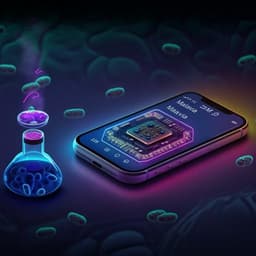
Medicine and Health
Drug classification with a spectral barcode obtained with a smartphone Raman spectrometer
U. J. Kim, S. Lee, et al.
Discover how a revolutionary smartphone-based Raman spectrometer is transforming drug classification with an astonishing 99.0% accuracy! This groundbreaking research, conducted by Un Jeong Kim and colleagues, showcases a novel 'spectral barcode' method that even distinguishes between brands, merging cutting-edge technology with practical applications.
Playback language: English
Related Publications
Explore these studies to deepen your understanding of the subject.







